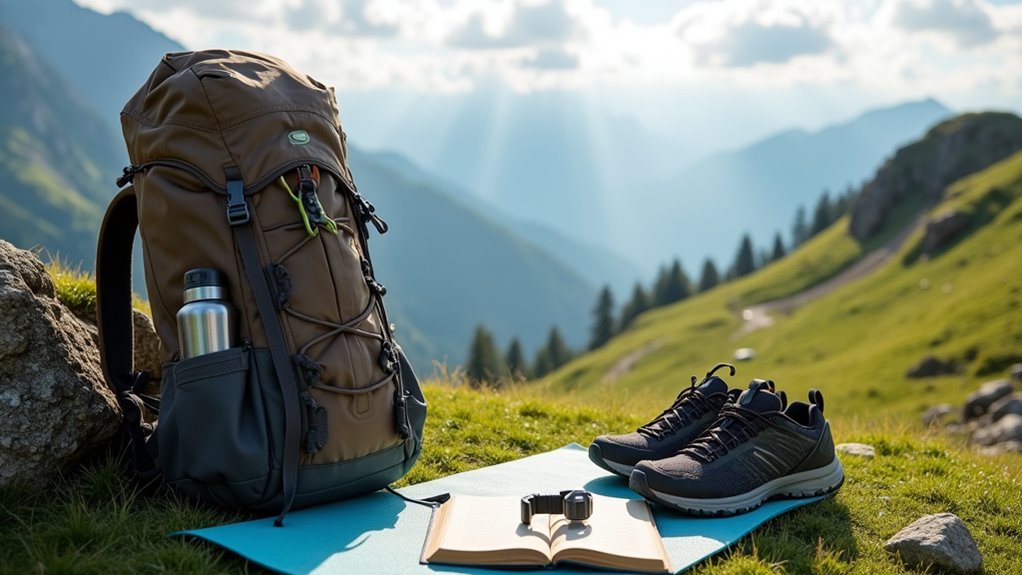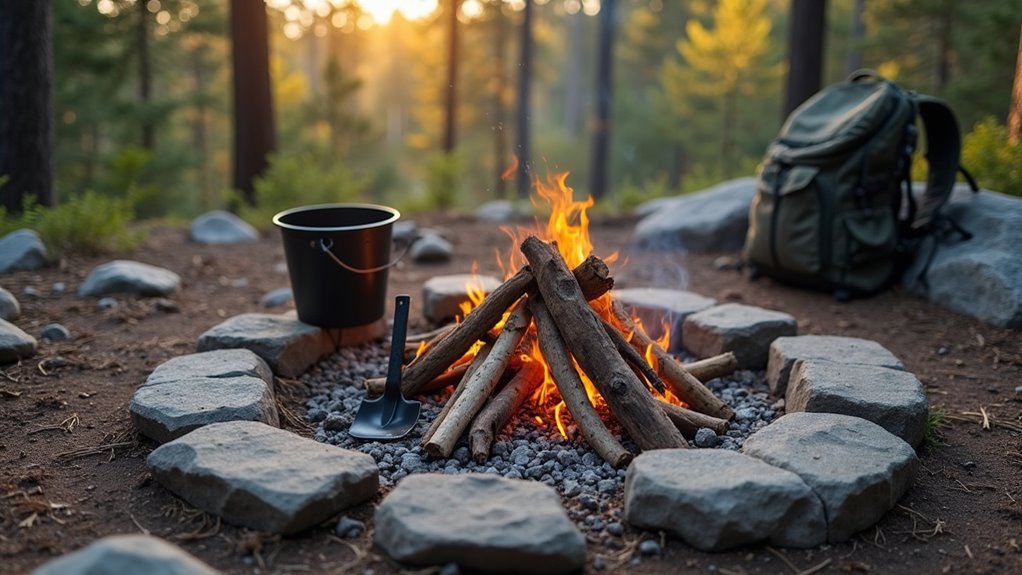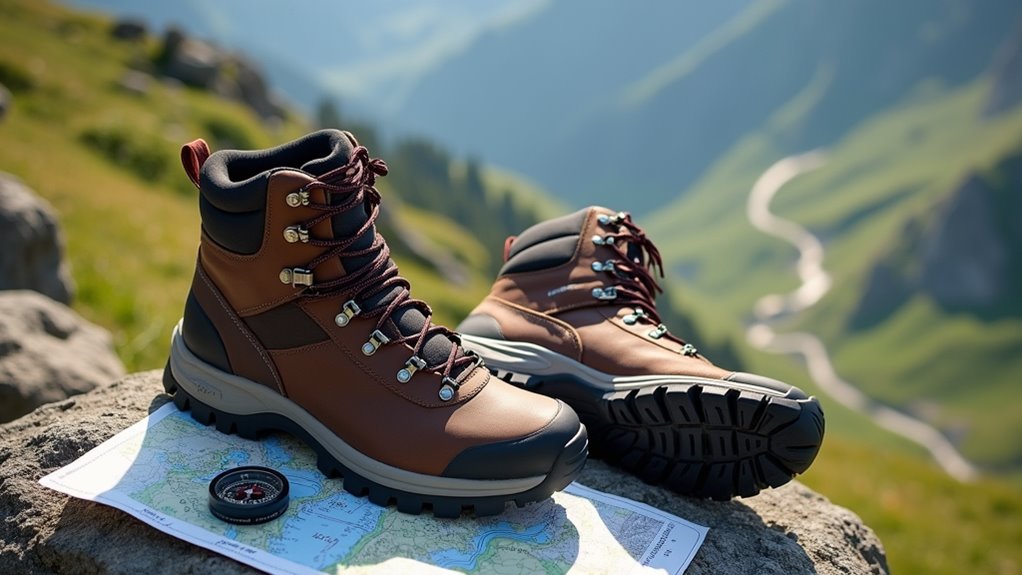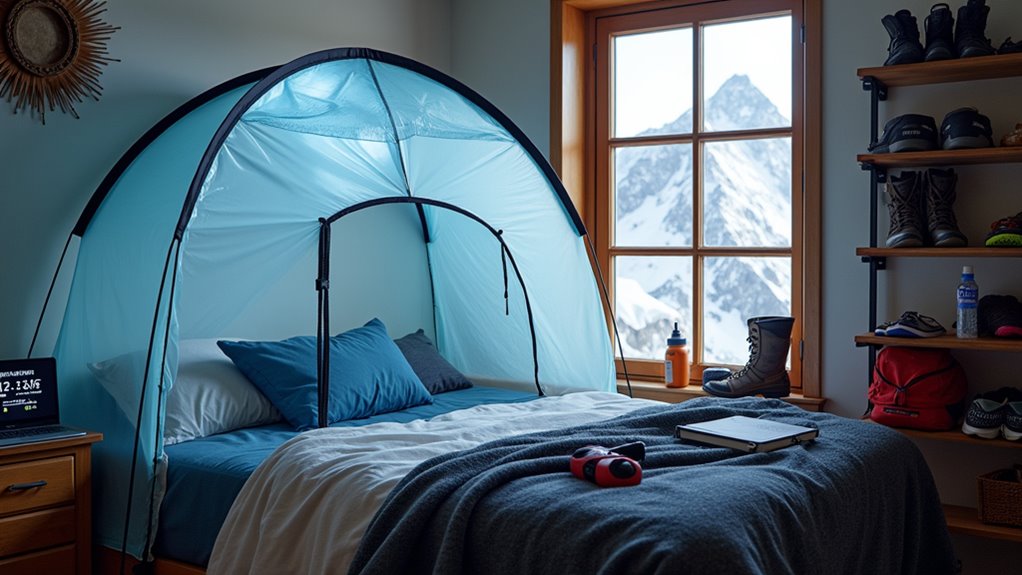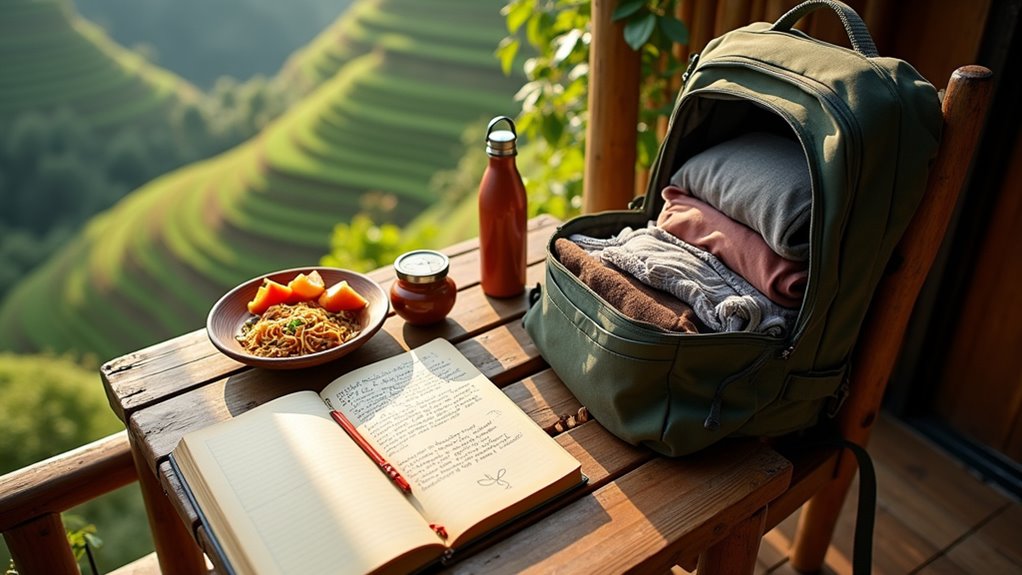To stay fit while traveling as a backpacker, you should schedule regular bodyweight workouts like Tabata or HIIT in your accommodation or local parks, block time for exercise in your daily routine, and take advantage of stairs or walking instead of public transport for short distances. Opt for local activities such as bike rentals or swimming in lakes, focus on eating whole foods, and monitor your hydration. With some organization, you’ll discover detailed strategies to maintain your fitness on the move.
Whether you’re commencing on a multi-country backpacking trip or traveling for business, maintaining your fitness doesn’t have to be sacrificed. Establishing routine and managing your time are essential. By setting fixed daily exercise times, such as a 15-minute morning Tabata session, you create consistency and prevent missed workouts.
Staying fit while traveling is possible—establish a routine and set daily exercise times to maintain consistency wherever you go.
Prioritize at least four 30-minute workouts per week as a baseline. Use alarms to help establish a regular sleep and exercise rhythm; for example, setting an 8 AM wake-up alarm helps avoid inertia and keeps you on track. Block off calendar time for fitness and pre-plan your workouts—bodyweight routines or resistance band circuits—to eliminate decision fatigue.
Maximize every opportunity for “soft exercise” by opting for stairs over elevators, walking or skateboarding for short distances, and incorporating hikes or sunrise walks into your itinerary. Engage in active leisure activities like swimming, dancing, or even sex to passively burn calories. Building a habit stack can enhance your mental clarity and help reduce anxiety while you’re on the road.
Stand frequently during transit or downtime to reduce sedentary behaviors, which can accumulate quickly while traveling. Remember, exercise does not need to occur in a gym; you can often get effective movement by exploring the outdoors or using your own bodyweight.
Utilize bodyweight and no-equipment workouts to overcome limited space and resources. Tabata or HIIT protocols—using one-minute high-intensity intervals—deliver efficient cardiovascular and strength benefits. Gradually increase the intensity and duration of your workouts to build trail endurance similar to how hikers prepare for challenging terrain. Seek out playgrounds for pull-ups, dips, and step-ups, and perform resistance band exercises like rows or squats for portable strength training.
Hotel-room routines, including push-ups, lunges, and planks, can be performed in minimal space. Bear crawls and burpees work as effective full-body warm-ups or standalone workouts.
Leverage local resources for unique exercise experiences. Rent bikes to explore cities while training your legs and core, swim in oceans or lakes for low-impact cardio, and join free community fitness events like park runs.
Trail running or climbing local landmarks offers both sightseeing and physical challenge. Negotiate gym day passes at budget-friendly local facilities if you prefer conventional workouts.
Support your fitness efforts with sound nutrition. Choose whole foods, hydrate consistently, and limit alcohol intake to avoid empty calories. Prepare portable meals and prioritize protein-rich options to preserve muscle mass.
Frame fitness as energy-building, track your progress via apps, and accept flexibility—shorter workouts still contribute to your overall consistency.
